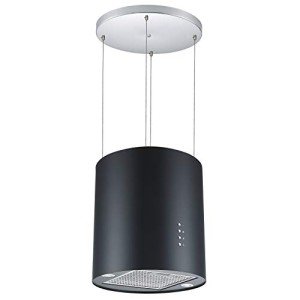You'll Never Guess This Cooker Hood For Island's Secrets
페이지 정보

본문
Cooker Hood for Island: Essential Guide to Choosing and Installing the Right Model
In modern cooking areas, the island vent hood hood has actually become a crucial appliance for homeowners aiming to combine performance with style. Not just does it enhance air quality by expelling smoke, smells, and grease, but it likewise functions as a style centerpiece. This article checks out the significance of island hoods, the factors to think about when choosing one, the different types readily available, and setup pointers.
Comprehending Island Hoods
Island hoods are ventilation systems that hang above kitchen islands, normally where cooktops are set up. Unlike conventional range hoods, which connect to walls, island hoods are typically in the center of the kitchen, requiring thoughtful factor to consider of style and performance.
Why Choose an Island Hood?
- Aesthetic Appeal: An island hood can improve the overall appearance of your kitchen, typically readily available in different designs and surfaces to complement your decor.
- Improved Air Quality: By efficiently eliminating smoke, steam, and smells, island hoods assist keep a fresh environment in the kitchen.
- Enhanced Lighting: Many island hoods come equipped with built-in lights, supplying additional lighting for cooking tasks.
Elements to Consider When Choosing an Island Hood
Picking the right island hood involves thinking about several critical factors. Here's a consolidated summary:
1. Size and Dimensions
- Hood Width: The hood needs to cover at least the width of the cooktop. For ideal efficiency, a general guideline of thumb is that it must extend 3 inches on each side.
2. Type of Ventilation
- Ducted: This type vents air outside, supplying optimal effectiveness. It's ideal for bigger cooking areas and those that cook frequently.
- Ductless: Ductless hoods recirculate air through filters. These are much easier to install however may not be as efficient in larger spaces.
3. Airflow Capacity
- CFM (Cubic Feet per Minute): This measurement suggests how much air the hood can move. A higher CFM is much better for heavy cooking, while lower CFMs suffice for light use. A general recommendation is:
- Light Cooking: 200-400 CFM
- Medium Cooking: 400-600 CFM
- Heavy Cooking: 600+ CFM
4. Design and style
- Consider various finishes and styles:
- Chimney Style: Features a wall-mounted chimney that hangs down.
- Canopy Style: A more compact choice, typically mounted directly over the cooktop.
- Downdraft: Integrated into the cooktop, increasing just when needed.
5. Noise Level
- Sone Rating: This shows the sound given off by the hood. A sone ranking of 1-2 is considered quiet, while anything above 4 might be invasive.
6. Features and Controls
- Lighting Options: Look for LED lighting for energy efficiency.
- Speed Settings: Multiple extractor fan for island hob speeds can use more control depending on the cooking situation.
- Filter Type: Select in between mesh, baffle, or activated charcoal filters based on upkeep and cooking design.
Installation Tips
Installing an island hood can be a difficult task. Here are some essential steps for a successful setup:

Choose the Right Height: Ideally, place the hood 30-36 inches above the cooktop for optimum efficiency and security.
Surface area Preparation: Ensure that the ceiling is structurally sound to support the weight of the hood.
Electrical and Ductwork: If choosing a ducted design, plan for ductwork to be run to the exterior. Talk to an expert if needed.
Follow Instructions: Always follow the maker's installation guidelines for best practices.
Check the System: Once set up, check the ventilation and lighting functions before completing any last touches.
Choosing and installing a Cooker Hood For Island hood for cooker hood for island an island kitchen extractor is a valuable investment in both the performance and looks of a kitchen. By considering elements like size, ventilation type, airflow capacity, design, installation guidelines, and user-friendly functions, house owners can enhance their cooking environments while guaranteeing healthier air quality.
Often Asked Questions (FAQs)
Q1: How do I understand what size island extractor hood hood I need?A: Measure the width of your cooktop and pick a hood that is at least as large, ideally extending a few inches on each side. Q2: Are ductless hoods simply as effective as ducted
ones?A: Ductless hoods are easier to install and require less maintenance however may not carry out as efficiently as ducted hoods for heavy cooking needs. Q3: How frequently ought to I clean up the filters?A: It's suggested to tidy or change filters every 1-3 months, depending upon use. Q4: Can I set up the island kitchen hood hood myself?A: While some house owners might pick to set up the hood themselves, employing an expert is a good idea, especially for ducted designs. Quick Reference Table
: Island Hood Selection Guide Element Suggestion Hood Width At least equivalent to cooktop; extends 3 inches on each side Air Flow (CFM )Light Cooking
: 200-400 CFM; Medium: 400-600; Heavy: 600+Noise Level Objective for 1-2 sonescorefor peaceful efficiencyFilter TypeBaffle or mesh for simpler maintenance; activated charcoal for ductless Setup Height 30-36 inches above the cooktop Including an island hood into a kitchen setup isnot simply a matterof function; it is likewise a consideration of design, ease of usage, andair quality.This careful selection boosts cooking experiences while elevating the overallkitchen aesthetic.
- 이전글Five Killer Quora Answers To ADHD Medications For Adults 25.05.21
- 다음글The 10 Most Scariest Things About Door Installation Luton 25.05.21
댓글목록
등록된 댓글이 없습니다.



